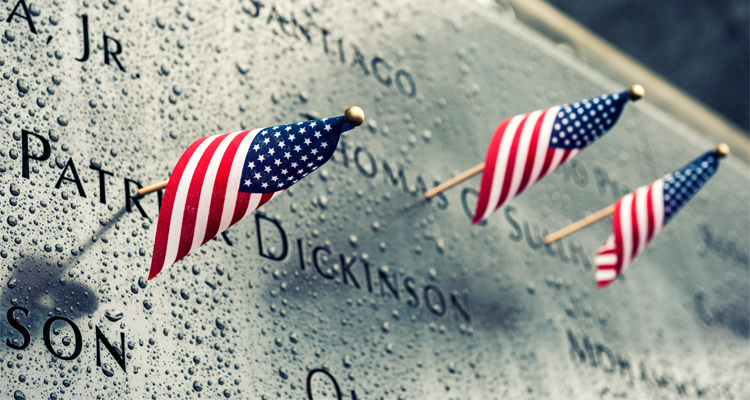It’s hard to believe that the site of the September 11, 2001 attacks in New York City—the site of so much tragedy and devastation—is today an urban oasis, boasting a renewed vitality with a park-like setting that combines reverence with historical significance.
Though it might seem like only yesterday to adults, a majority of today’s elementary and high school students weren’t even born when the events of September 11 unfolded. Discussing those events and their ramifications provide lessons in history, civics, and science, and a visit to the 9/11 Memorial and Museum provides a a one-of-a-kind living classroom on this difficult topic.
Those who lived through 9/11 and the weeks that followed could only wonder what the future would hold and what might happen to the area where the World Trade Center towers once stood. It took more than a decade for those answers to all shake out, but now we know.
“The rebirth and revitalization of lower Manhattan will be remembered as one of the greatest comeback stories in American history,” New York Mayor Michael Bloomberg said in a speech delivered ten years after terrorists took down the twin towers of the World Trade Center.
Replacing the majesty of the dual towers is One World Trade Center, which rises, with its antenna, to the symbolic height of 1,776 feet. The building itself is 1,368 feet tall, mirroring the height of the World Trade Center’s original North Tower. At 104 floors, it is the tallest office building in North America.
[embedvideo id=”Nn11DWH_LEA” website=”youtube”]
“It truly is the eighth wonder of the world,” Steven Plate, director of World Trade Center construction for the Port Authority of New York and New Jersey told ABC News. “I’m an engineer, and I can add numbers and tell you ‘tallest, strongest’ and all this stuff. But at the end of the day, it’s the most beautiful building in the most beautiful city in the most beautiful region in the world.”
[embedvideo id=”R8PpPXcOwj4″ website=”youtube”]
As much as One World Trade Center stands as a beacon of America’s resilience, it is the 9/11 Memorial and Museum that draw tourists, history buffs, mourners, and the curious to the 16-acre site, not far from New York’s Wall Street—an area known after the attacks as “Ground Zero.”
The architectural footprints of the twin towers are now occupied by reflecting pools, continually filled by the largest man-made waterfalls in North America. The cascading waterfalls stream water down the inner sides of the pools, which are illuminated at night. Names of each person who perished in the 2001 and 1993 attacks are inscribed in bronze panels along the upper edges of the Memorial pools.
The names on the Memorial are arranged and grouped to reflect the lives of the individuals, such as the companies they worked for or where they were on 9/11. There are groupings for those who worked in the towers, those who worked at the Pentagon, flight crews, and passengers, including those who went down on Flight 93 in Pennsylvania, and the first responders. Flight 93 has its own memorial in Shanksville, Pennsylvania.
The Memorial, which opened September 11, 2011, took five and a half years to complete. It was designed by architect Michael Arad and landscape architect Peter Walker after consideration of more than 5,200 submissions. Arad called the Memorial “Reflecting Absence.”
The 9/11 Museum, originally expected to open a year later, did not open until May 2014. It took more than eight years to complete, due in part to funding delays, then construction delays caused by Hurricane Sandy.
If you plan to tour the site, be advised that young children might have difficulty grasping the magnitude of destruction and could find some of the exhibits in the 9/11 Museum disturbing. Visitors are greeted by an entry pavilion designed to look like a partially collapsed building. The glass atrium features two forked steel beams known as “tridents,” which at seven stories tall were part of the façade of the original towers.
However, most of the museum’s 110,000 square feet of exhibition space is below ground, extending seven levels to the bedrock level of the site which includes the “slurry wall” that held firm, preventing the Hudson River from flooding Lower Manhattan. The museum documents the events of September 11 and their continuing impact. The 9/11 story is told through multimedia displays, narratives, and artifacts.
Some of the artifacts are large, including two Fire Department of New York (FDNY) fire trucks, an ambulance, and structural steel from the point of impact, where Flight 11 crashed into the North Tower. Some are small, including personal items donated by victims’ families and objects salvaged from the wreckage.
The Museum also includes the exhibit “In Memoriam,” which features portrait photographs of nearly 3,000 victims of the World Trade Center attacks.
The Memorial and Museum website reminds parents that children will react differently to the subject of 9/11 and when visiting the site.
“Some children will want to talk about the attacks and some won’t. Both reactions are common,” according to the Museum site. “If they do want to talk, it’s important to offer children a safe space to share their memories, beliefs, and questions. Actively listen to their thoughts, attend to their body language, validate their emotions, and encourage respectful conversation and discussions. If they don’t feel like talking, don’t force the discussions. . . . Acknowledge that we don’t have all the answers.”





































